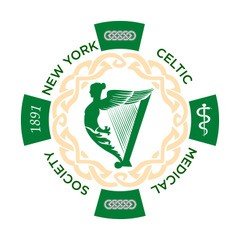One of the most prominent physicians in New York City in the early 19th Century was Dr. William James McNeven. His journey from a hedge school in County Galway to being lauded as the ‘father of modern chemistry’ involved rebellion, imprisonment, and exile.
The Catholic McNevens were driven from their land in the North of Ireland by Oliver Cromwell’s colonial force during the 17th Century, obviously choosing Connacht over the alternative of hell, settling near Aughrim in East County Galway.
He was fortunate to have a well-connected uncle, Baron William O'Kelly MacNeven, rewarded for his skills as a physician by the Empress Maria Theresa with an Austrian title of nobility, building a palace in Prague that survives to this day. At the age of 12, his mother and two siblings having died, and the Penal Laws preventing Catholics from receiving education, William was sent to stay with his uncle in Prague, learning the classics, subsequently moving to Vienna to complete medical studies by the age of 21, graduating with his brother Hugh.
William spent a couple of years in London where he was admitted a licentiate of the Royal College of Physicians before moving back to Dublin and to practice, with offices listed on Capel Street and Jervis Street.
Within a few years McNeven became involved in the United Irishmen political movement seeking Catholic emancipation. He was involved in the planning of the ill-fated 1798 rebellion, resulting in his arrest and imprisonment, initially in Kilmainham jail in Dublin from which he was transferred to a prison in Fort George, near Inverness, in the North of Scotland.
Released in 1802, and forbidden to return to Ireland, McNeven initially visited his childhood friends in Bohemia, then spent much of the year walking through Switzerland. It was a landmark year for Switzerland, a year of rebellion that replaced the central Helvetic Republic and with the federal system of cantons that survives to today. He wrote a book about his observations during this epochal year in Switzerland, ending the year of 1802 in Paris. Still retaining the hope that the French could be persuaded to invade and liberate Ireland, he negotiated with Tallyrand, the French foreign minister, and joined Napoleon Bonaparte’s Irish Legion as a captain. When it became clear within a couple of years that Bonaparte was more intent on invading Egypt than Ireland, McNeven resigned his commission, sailing from Bordeaux in June 1805 for New York, landing on the 4th of July. In the later words of his daughter "It was, I think, wonderfully appropriate that one who had suffered so much in the cause of liberty should have reached the shores of America on the anniversary of her day of freedom."



